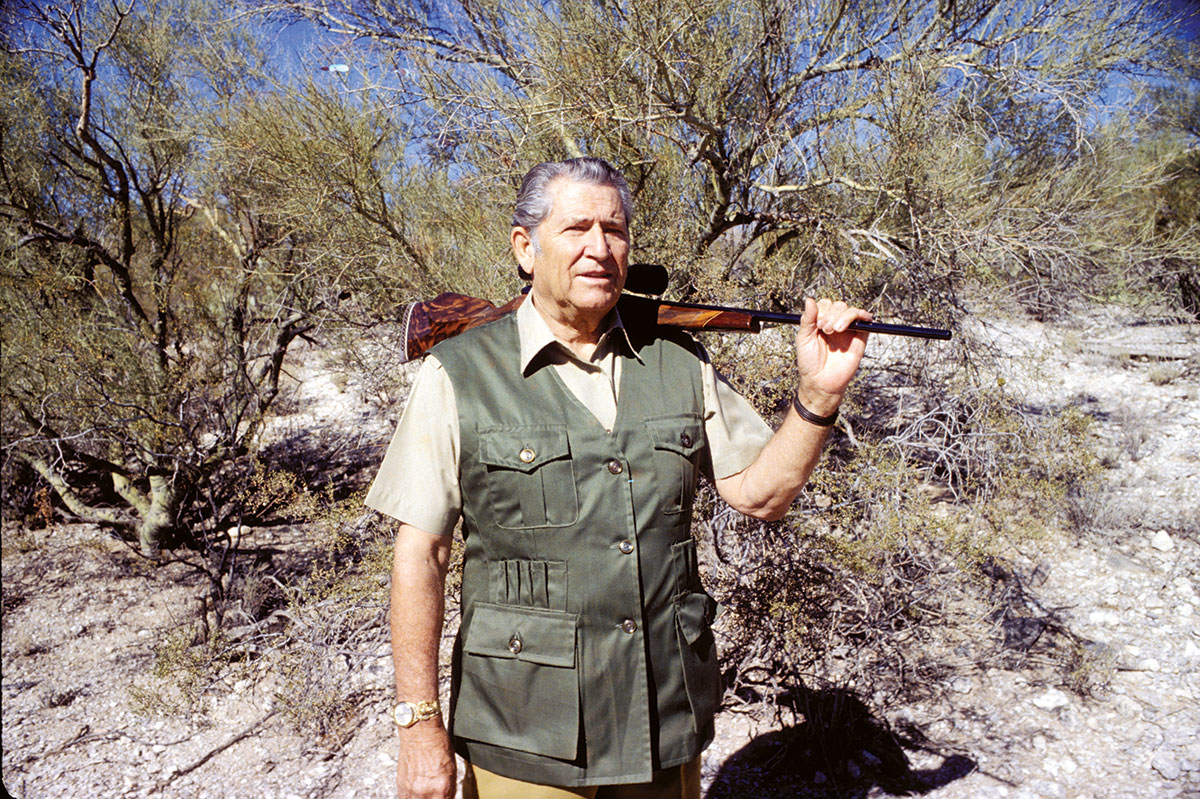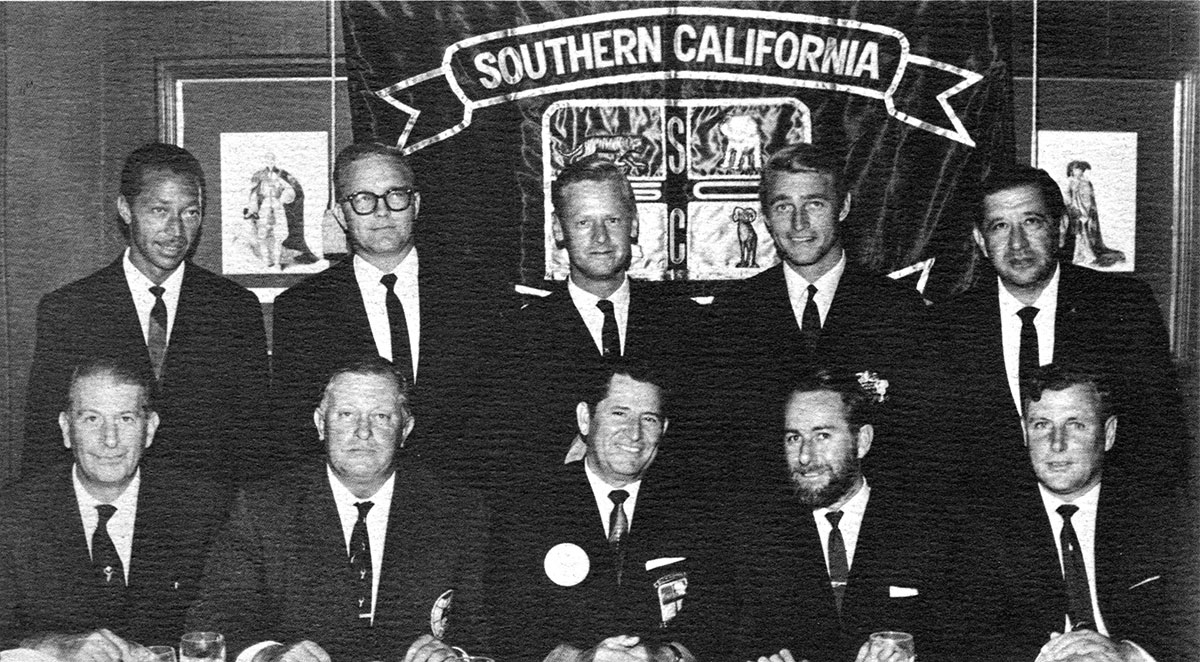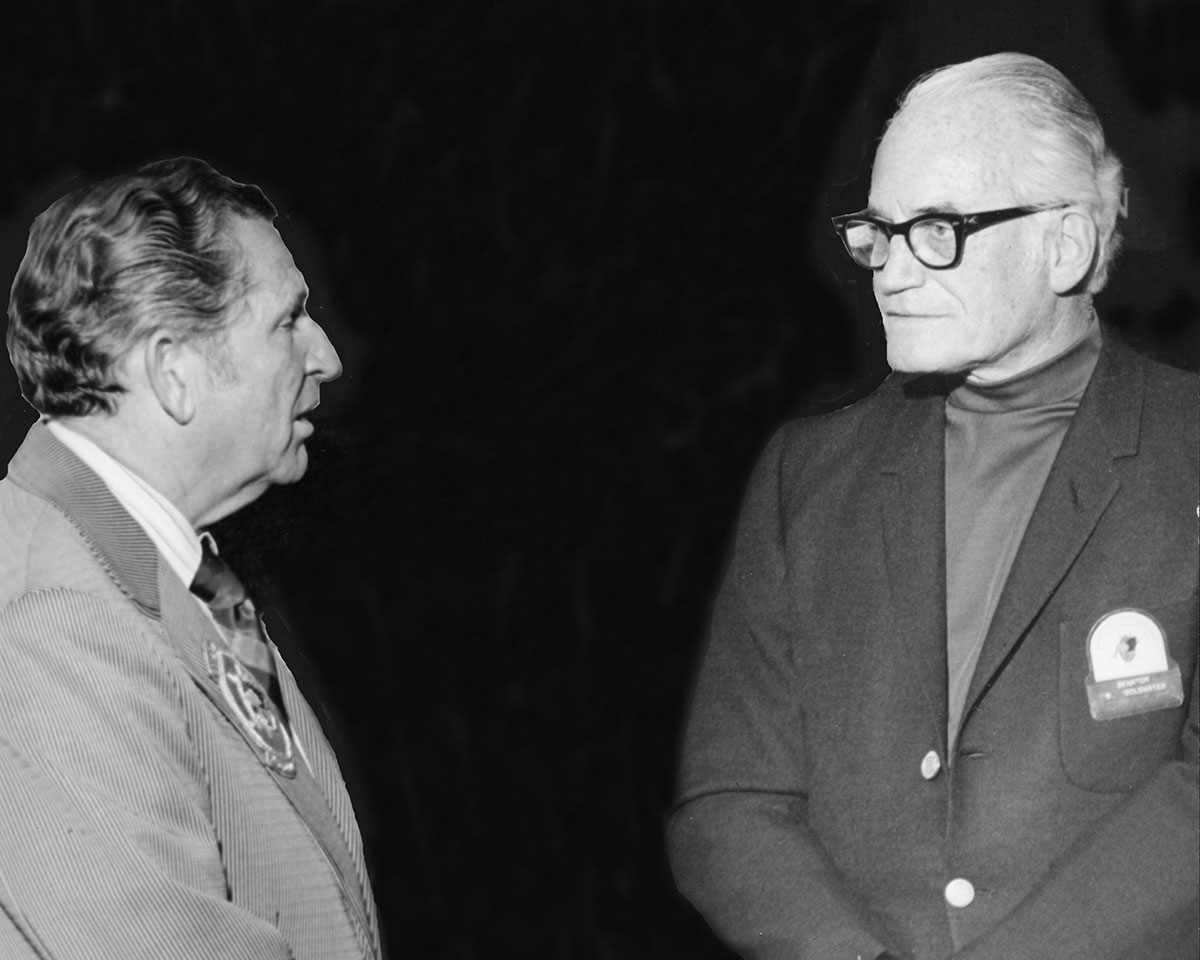SCI’s 50th Anniversary Is On The Horizon
(Editor’s Note: Safari Club International will celebrate its Golden 50th Anniversary in 2021. The 50th SCI Convention will be held in 2022, which means there will be the opportunity to celebrate two important landmarks in the near future.  Safari Magazine will publish articles in all of its issues leading up to these historic years, outlining how the organization evolved from its inception until then. Truly, there is much to celebrate and many reasons for members to be proud of what SCI has become and what it promises to be in the future.)
Safari Magazine will publish articles in all of its issues leading up to these historic years, outlining how the organization evolved from its inception until then. Truly, there is much to celebrate and many reasons for members to be proud of what SCI has become and what it promises to be in the future.)
Forty-nine years ago, this year, the then almost five-year-old Southern California Safari Club was headed for two relatively quick changes that would result in the formation of Safari Club International.
First in 1971, SCSC evolved into Safari Club of Los Angeles, and then almost immediately SCLA evolved into SCI – when SCI Los Angeles and SCI Chicago merged. By January 1972, SCI Los Angeles and SCI Chicago were both chapters of SCI.
The man behind it all was Casper Johnny McElroy. Mac, or Mr. Mac as some folks referred to him, was a character without whom SCI would not exist.
Mac’s own journey (safari if you will) was both colorful and epic in all senses of the terms. At 13, he hopped on a freight train and rode the rails from Texas to California where he worked on Parker Dam, was a night club bouncer and a carpet layer. During WWII, he served in the Merchant Marine. After the war, he and wife Alvie owned a bar, built cabins in the Big Bear Lake area of California and owned the largest floor covering business in Los Angeles.
By 1960, Mac went on his first African safari, an adventure in Kenya with Professional Hunter Glen Cottar. At that time, there were local safari clubs in major metropolitan areas around the U.S., but no truly national or international cohesive organization, save perhaps Shikar-Safari.
The safari industry as we now know it didn’t exist as such at that time, but there was enough interest in international hunting and enough participants to make the formation of such an industry viable. All of the ingredients existed for a singular, major international organization. It took someone to put the pieces together. Mac was the one who did it, first through SCSC, then SCLA and finally SCI.
 It is important to know the “who,” the “why” and the “when” to better understand the “what” when it comes to all of the glorious reasons to celebrate the upcoming 50th Anniversary of SCI.
It is important to know the “who,” the “why” and the “when” to better understand the “what” when it comes to all of the glorious reasons to celebrate the upcoming 50th Anniversary of SCI.
SCI is unique in the world. Always has been and likely always will be. SCI is a very complex organization. The more one learns about SCI, the more there is to like and admire.
As we go through 2020, we’ll explore SCI’s rich history in Safari Magazine, pointing out its many accomplishments. SCI has done an amazing number of things in its five short decades.
There were eight founding purposes stated back in 1971: “The purpose of this association shall be:
- To promote good fellowship among those who love the sport of big game hunting.
- To preserve the wild game species of the world through selective trophy hunting of the past-prime animals, leaving the young to mature, and the prime animals to reproduce.
- To aid conservation by initiating projects, and by supporting worthwhile projects of other organizations, both at home and abroad.
- To educate our youth in the safe and sportsmanlike use of firearms and to interest them in the conservation and preservation of the forests and animals, which are their natural heritage.
- To share our hunting skills and information with the younger, serious but less experienced men and to encourage them to develop into full-fledged big-game trophy hunters.
- To provide a channel for organized efforts to promote a public understanding and acceptance of proper hunting as the ancient, honorable and valuable sport that we know it to be.
- To provide recognition for the individuals who have succeeded in this sport and those who have accomplished some significant advance in any of our purposes.
- To participate and associate with other clubs throughout the world who share common goals, beliefs, and purposes.”
The founders of SCI viewed honor as an important attribute. They stressed the importance of four key words that summarized their views of themselves and their new organization: Courage, Honor, Loyalty, Integrity:
“COURAGE: Courage is the quality that keeps one going in the face of adversity, opposition and danger. Courage stands for perseverance and determination of purpose. To fight for what is right and true.
HONOR: Honor is an allegiance to one’s country, to one’s calling, profession and to one’s sport. Honor is to obey and respect the laws of the land in which we live and the laws of the countries which we visit. Especially those laws which govern the sport in which we as hunters participate.
LOYALTY: Loyalty implies a strict adherence to keeping one’s word with friend or foe alike. It is an unwavering belief in one’s religion, and the observance of respect for one’s parents and friends. Loyalty is an inherent imperviousness to all influences that tend to weaken one in the face of temptation.
INTEGRITY: Integrity is the reflection of dignity and excellence of character in one. It is a quality of being complete and undivided; of moral soundness, honesty and uprightness. Integrity is a characteristic in one whose worth demands the respect of his fellowmen.”
The founders, as is evident in the statements above, wanted more than just a club, more than just an organization. They viewed hunters in heroic terms and expected more from hunter-members than dues or lip service. They believed in true commitment.
 Although the qualification requirements for membership in SCI have changed over the years, the initial standards further reflected the founders’ beliefs that to belong to SCI was something special:
Although the qualification requirements for membership in SCI have changed over the years, the initial standards further reflected the founders’ beliefs that to belong to SCI was something special:
“Classes of Members: There shall be one class, namely: Regular, all of whom shall be over the age of 18 years.
“Membership Qualification. The number of regular Members shall be unlimited. To be eligible for Membership, a person must be of good moral character and have demonstrated an active interest and had actual experience in the hunting of big game both within and outside the continental limits of the United States.”
Hence, SCI has been about international hunting, right from the start. The very name of the organization enhances that truth – it is the Swahili word for journey.
Much of the early efforts were to establish chapters around the United States (eventually around the world, but first in the U.S.). Mac and Hyland Erikson, SCI’s second president, held meetings in Houston, Dallas, Denver, Detroit, Minneapolis and Pittsburgh, establishing chapters in those cities – going from zero to 10 chapters in the first year. Others followed quickly and there were 50 chapters established in the first eight years.
Hence, by the 1980s, SCI was well on its way to becoming what it is today. The basic goals of advocacy and conservation were well established by then.
Among the important matters for SCI during the ‘70s were (in addition to forming SCI in the first place):
- 1973 – Safari Club International Conservation Fund (SCICF) was formed.
- SCI presented its first medallions for major awards at the Convention.
- 1975 – SCI became involved in its first big advocacy campaign – an effort to halt the production and airing of the anti-hunting program “The Guns of Autumn” on CBS, narrated by Dan Rather (the network had hired Cleveland Amory, founder of the anti-hunting group Fund for Animals as its sole consultant).
- 1975 – The American Wilderness Leadership School concept was launched by Mac with the help of three outfitters, each of whom hosted 20 to 25 students the first year.
- 1976 – AWLS held a single session at the Box Y Ranch in Wyoming.
- 1976 – SCI President Andy Oldfield represented the United States at CITES.
- 1976 – SCICF and SCI Chapters presented the Mexican government two Toyota 4×4 vehicles for use by wardens and biologists in desert bighorn sheep work in Sonora.
- 1977 – SCICF and SCI Chapters presented the Mexican government two 4×4 Ford Broncos for use in Baja California.
- 1977 – SCI Spain, the club’s first overseas chapter, was formed.
- 1977 – SCI’s first environmental resolution was presented at an international wildlife symposium in Nairobi, Kenya protesting the countrywide ban on hunting.
- 1977 – SCI incoming President Carroll Mann met with U.S. President Jimmy Carter and Interior Secretary Cecil Andrus to discuss SCI’s objections to certain provisions of the Endangered Species Act.
- 1977 – SCI printed its first Record Book.
Although SCI has grown in numbers and importance in the hunting world since then, it was the decade of the ‘70s that set the stage. In the next issue of Safari Magazine, we’ll look at the decade of the ‘80s and how that period affected both SCI and hunting around the world.–Steve Comus

